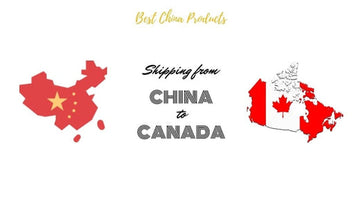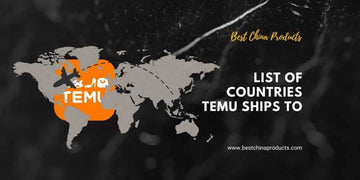When you think of luxury, Louis Vuitton undoubtedly comes to mind. But with counterfeiters becoming increasingly sophisticated, spotting a genuine LV bag can feel like a daunting task.
Whether you're a seasoned collector or a first-time buyer, this guide is your go-to resource for unraveling the secrets of authentic Louis Vuitton craftsmanship.
Dive into the details that make LV iconic and arm yourself with the knowledge to confidently navigate the world of high-end fashion.
Also Read: Cheaper AliExpress Alternatives with Fast Shipping
Real vs Fake Louis Vuitton
When it comes to authenticating a Louis Vuitton, it's all about the details.
Start with the monogram, ensuring it's symmetrical and the leather is seamless. Check for perfect, straight stitches in a distinctive yellow-mustard shade, and pay attention to all-capital lettering with round O's.
Authentic bags don't come with certificates, so beware of one. Leather handles should evolve in color over time, and genuine hardware is brass-plated and weighty. Different linings may exist, and stamps should have short tails and thin lettering.
Date codes reveal manufacturing details, and bags under a special license lack them. Zipper logos evolved over time, and real dust bags are simple – soft tan with the LV logo.
Louis Vuitton Monogram

Created in the 1920s to combat counterfeiters, this monogram has changed over time while keeping its unique features intact.
Start by looking at the asymmetry in the pattern – it should have irregular properties, beginning in an asymmetric way.
When examining the letter arrangement, the 'L' should be at the bottom, slightly overlapping the 'V.' Next, you'll find a floral pattern, a circle, another flower, and finally, the 'LV,' forming a symmetrical layout.

Keep an eye out for the absence of cut-offs, especially in modern bags where the LV logo within the monogram should rarely be cut off.
Genuine Louis Vuitton bags are crafted from seamless leather, using a single piece without a seam in the middle.
Quality Stitch Work

Authentic bags boast perfectly straight and even stitches. When inspecting handles, such as those on the Louis Vuitton Alma and Speedy, each handle tab should reveal precisely five stitches across.
Another key indicator is the color of the stitching. Genuine Louis Vuitton bags exhibit a distinctive yellow-mustard hue in their stitching, setting them apart from replicas that often feature a brighter yellow shade.
Finally, scrutinize for the absence of loose threads. Authentic Louis Vuitton bags showcase precise and durable stitching, ensuring there are no loose ends.
Authenticating the Hardware

Genuine Louis Vuitton bags boast brass-plated hardware, a material that undergoes a natural aging process, transforming over time into a bronze tone or developing a subtle greenish hue.
This evolution is a unique characteristic of authentic Louis Vuitton items, distinguishing them from replicas.
Additionally, when examining the hardware, take note of the rings. Authentic Louis Vuitton bags use D-shaped rings, as opposed to rounded ones.
This specific detail contributes to the overall authenticity of the item, emphasizing the brand's commitment to precision in design.
Validate the Date Code
Not all, but some LV products carry date codes that are imprinted on a tab concealed within the bag.
These date codes vary depending on the location and date the bag was manufactured and unfortunately there are multiple kinds of date code formats in existence today.
Louis Vuitton Manufacturing Country Codes
| Louis Vuitton Manufacturing Countries | Country Codes |
| France | A0, A1, A2, AA, AAS, AH, AN, AR, AS, BA, BJ, BU, DR, DU, CO, CT, ET, FL, LW, MB, MI, NO, RA, RI, SD, SF, SL, SN, SP, SR, TJ, TH, TR, TS, VI, VX |
| Italy | BC, BO, CE, FO, MA, RC, RE, SA, TD |
| Spain | CA, GI, LO, LB, LM, LW |
| United States | FC, FH, FL, LA, OS, SD |
| Switzerland | DI, FA |
| Germany | LP, OL |
Louis Vuitton Date Code 1980s
| Louis Vuitton Date Codes | Year Code | Month Code | Country Code | Example | Manufacturing Date |
| 1980’s: | |||||
| - First two numbers = year | 86 | - | - | - | |
| - Final number = month | - | 6 | - | - | |
| - Country code Example: 866A0 | - | - | A0 | 866A0 | Made in France in June 1986 |
Louis Vuitton Date Code 1990-2006
| 1990-2006: | |||||
| - Country code | - | - | A0 | A00961 | Made in France in June 1991 |
| - First and third numbers = month | - | 9 | - | - | |
| - Second and fourth numbers = year | - | - | - | 61 |
Louis Vuitton Date Code 1990-2006
| 2007 to Present: | |||||
| - Country code | - | - | A0 | A02058 | Made in France in the 25th week of 2008 |
| - First and third numbers = week of year | - | 20 | - | - | |
| - Second and fourth numbers = year | - | - | - | 58 |
Pay close attention to the consistency of indentation and spacing within the date code.
Authentic Louis Vuitton items exhibit even indentation and spacing, showcasing the brand's commitment to precision in craftsmanship.
Take out the Dust Bag

Authentic Louis Vuitton dust bags typically come in a soft tan color, featuring the iconic LV logo.
This minimalistic design is a hallmark of genuine items, reflecting the brand's commitment to understated elegance.
In contrast, counterfeit dust bags may display excessive information or additional text.
Therefore, be wary of any dust bag accompanying an LV item that deviates from the authentic, straightforward design.
Lesser Known Ways How to Authenticate Louis Vuitton Products


Apart from the mainstream ways to authenticate Louis Vuitton products, there are a few other ways to tell if your LV is real or counterfeit. From the lining to the zip, let’s go over how you can validate your Louis Vuitton product.
- Louis Vuitton Lettering:
To make sure your Louis Vuitton bag is the real deal, check for the 'LOUIS VUITTON PARIS' mark. Look out for round O's, not oval-shaped ones that fakes might have. Also, the letter L before the O should be close but not all the way at the bottom. And, it's usually written in all caps, but sometimes they use a cool script.
- Certificate of Authenticity:
Genuine Louis Vuitton bags don't roll with a certificate of authenticity. If you stumble upon one, be on high alert – it's usually a dead giveaway that you're dealing with a knockoff. So, no certificate, no worries; that's the real deal.
- Bag Lining:
For monogram ones, keep an eye out for brown cotton textile inside. Now, if it's a Damier Ebene bag, expect to see a snazzy red microfiber lining.
- Special License Bags:
If you're checking out bags made by The French Luggage Company (TFLC) under a special license, they've got their own vibe. First off, no date codes on these. Also, watch for a distinct embossing style, Tyvek labels, and plated nickel hardware.
- Zipper Style:
Back in the early days of Louis Vuitton bags, they mixed it up with zippers from different companies like ECLAIR, TALON, and Coats & Clarks. Keep an eye out for that historical variety. However, the bag's from 1991 onwards carry a golden brass hardware with the iconic LV logo.
- No Hang Tags or Plastic Wrapping:
No hang tag or plastic wrapping. The genuine ones keep it simple, so if you see extra tags or plastic, it's likely not the real deal.
What Does a Real Louis Vuitton Bag Smell Like?
Authentic Louis Vuitton bags typically have:
- A faint, pleasant leather scent: This subtle aroma comes from the natural oils in the treated leather used in many LV bags. It's not overpowering or chemical-like.
- A clean, neutral smell: If the bag is new or well-cared for, it might simply have a clean, almost new-car-like scent.
- Slight traces of previous owner's perfume or lotion: In pre-owned bags, you might detect faint hints of the previous owner's fragrance or skincare products. However, these shouldn't be overwhelming or unpleasant.
Red flags to watch out for:
- A strong chemical odor: This is a common telltale sign of fake Louis Vuitton bags. The synthetic materials used in replicas often emit a harsh, chemical smell that genuine leather does not.
- A musty or mildew smell: This indicates poor storage conditions and could be present in both authentic and fake bags. However, it's less likely in well-maintained authentic pieces.
- A strong perfume or disinfectant scent: This could be used to mask other odors, potentially in an attempt to disguise a fake bag.
Conclusion
By honing in on these subtle nuances, consumers can ensure that the luxury they invest in is nothing short of the genuine masterpiece crafted by the iconic fashion house.
Ultimately, the journey to distinguish real from fake becomes a rewarding pursuit of sartorial authenticity.
Also Read:






